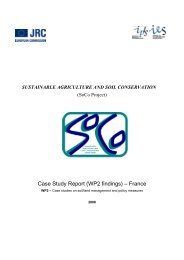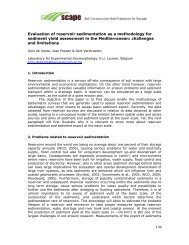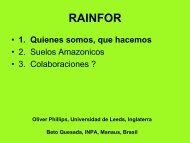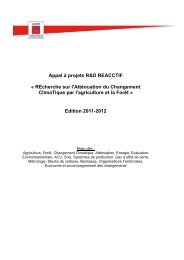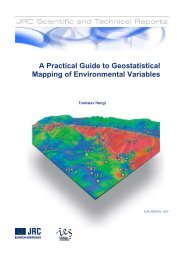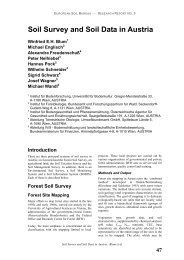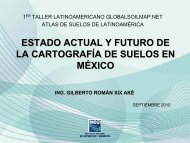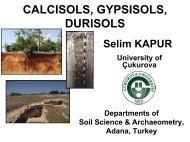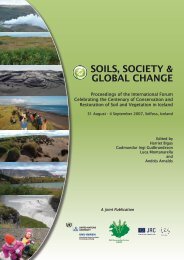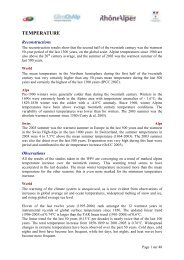Risk Assessment Methodologies of Soil Threats in Europe
Risk Assessment Methodologies of Soil Threats in Europe
Risk Assessment Methodologies of Soil Threats in Europe
Create successful ePaper yourself
Turn your PDF publications into a flip-book with our unique Google optimized e-Paper software.
It appears that the assessment <strong>of</strong> ESP for solution:solid ratios rang<strong>in</strong>g from r=0.5-2, a<br />
systematic error may occur that ranges from neglible to 15% due to the shift <strong>in</strong> the solid/liquid<br />
equilibrium. This error is largest for relatively small ESP-values, where a correct assessment is<br />
the most important for a good anticipation <strong>of</strong> changes.<br />
Obviously, the systematic bias, that can not be prevented completely if soil samples are stored<br />
under room-dry conditions, <strong>in</strong>crease if the volume <strong>of</strong> water used for suspend<strong>in</strong>g the soil<br />
<strong>in</strong>creases. For two relevant cases regard<strong>in</strong>g <strong>in</strong>itial ESP (before add<strong>in</strong>g water), the bias is shown<br />
<strong>in</strong> Figure 4.2 to be limited to with<strong>in</strong> 5-10%. Such a limited bias seems acceptable, as it will not<br />
affect the anticipation <strong>of</strong> the situation concerned and therefore we conclude that the liquid:solid<br />
ratio does not much affect our risk assessment.<br />
ESP*/ESP<br />
0.92 0.94 0.96 0.98 1.00<br />
0 100 200 300 400 500<br />
r (ml/100g soil)<br />
Figure 4.5. Relationship between ESP*/ESP and r for different <strong>in</strong>itial ESP keep<strong>in</strong>g constant<br />
constant the amount <strong>of</strong> water w=20ml/100gsoil,and CEC=30mmolc/100gsoil and Ctot=0.01<br />
mmolc/ml<br />
In this research, we have varied several other parameters besides the solid: solution ratio, and<br />
found that systematic errors are limited to tens <strong>of</strong> %. Although clearly scientifically considered<br />
to be significant, it is unlikely that such biass would lead to a different anticipation <strong>of</strong> the<br />
situation (regard<strong>in</strong>g hazards <strong>of</strong> sodicity). Hence, these results are not presented here, as for the<br />
present purpose <strong>of</strong> policy support they are not important enough.<br />
For reasons given above, it can be concluded that further harmonization/standardization <strong>of</strong><br />
present, predom<strong>in</strong>antly experimental RAMs is not urgent. Whereas this may be the conclusion<br />
for the current, strongly experimentally <strong>in</strong>cl<strong>in</strong>ed RAM <strong>of</strong> soil sal<strong>in</strong>ity, it is debatable whether it<br />
holds for further developments. <strong>Risk</strong> assessment <strong>in</strong> the GIS context, with more advanced<br />
numerical or analytical model<strong>in</strong>g is likely to be an unstoppable trend. S<strong>in</strong>ce this strongly model<br />
based larger-scale approach has received limited attention <strong>in</strong> the soil sal<strong>in</strong>ity context, is seems<br />
to have an excellent potential for harmonization before different authorities and scientific<br />
<strong>in</strong>stitutes have made their choices and have become less flexible.<br />
38



